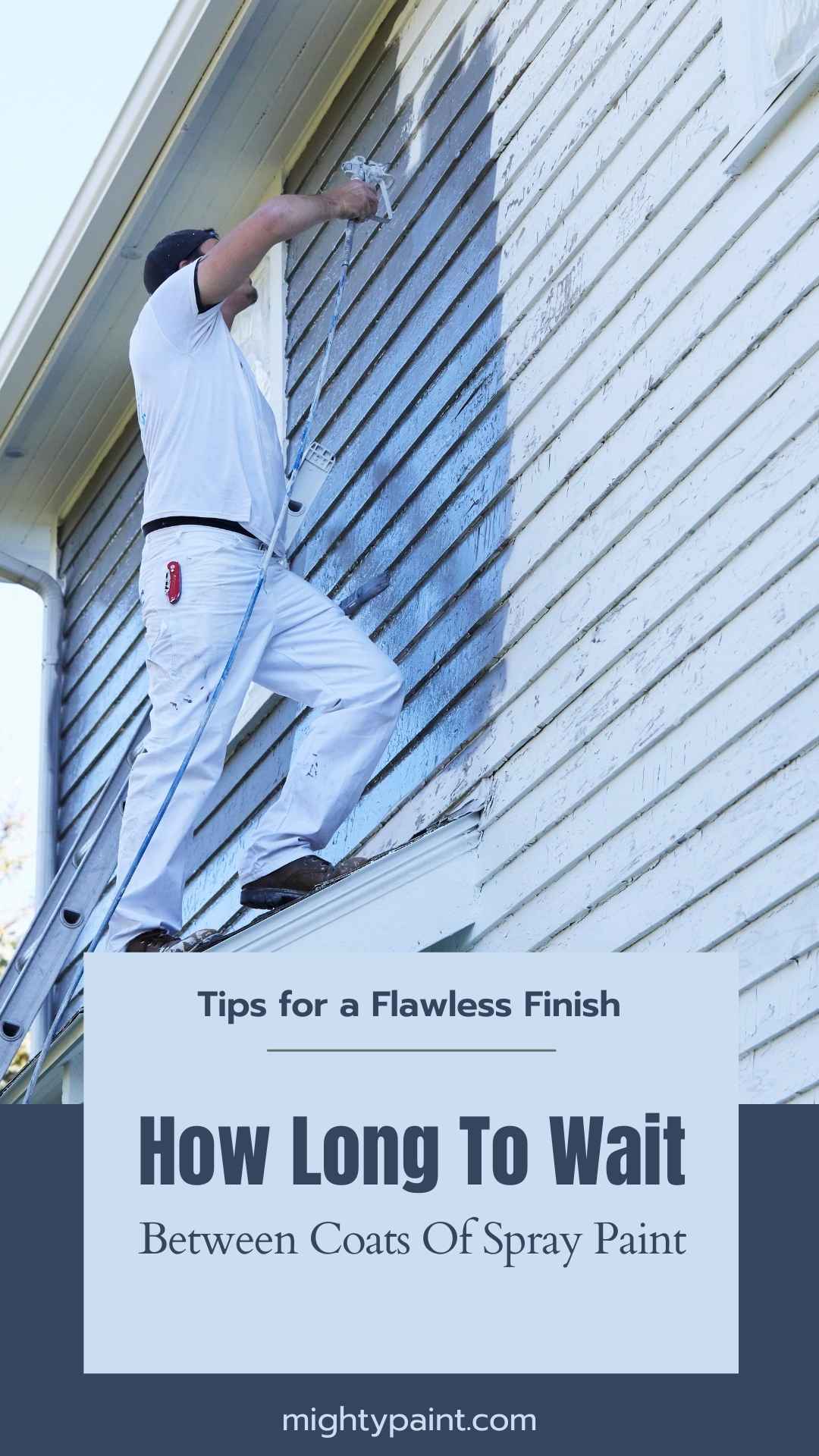How Long To Wait Between Coats Of Spray Paint: Tips for a Flawless Finish
When you’re working on a spray painting project, patience is key. Knowing how long to wait between coats can make a big difference in the final look of your work. For best results, you should typically wait 10 to 15 minutes between coats, depending on the conditions around you. This allows the paint to dry properly, avoiding runs and uneven textures.

Conditions like temperature and humidity play an important role in drying times. If it’s cold or damp, you may need to wait longer for the paint to set. Taking the time to let each layer cure is essential for achieving a smooth finish and ensuring that your project lasts.
Get the Fail-Safe Paint Color Playbook (Free PDF)
36 proven colors • 8 ready palettes • trim & sheen guide • printable testing cards.
Spraying thin coats is also crucial. Thick layers can lead to issues like dripping and peeling. By spraying lightly and giving each coat enough time to dry, you’ll set yourself up for success and create a finish you can be proud of.
Understanding Spray Paint
Spray paint is a convenient way to cover surfaces smoothly. Knowing the different types of spray paint and the importance of primer coats will help you achieve better results in your projects.
Types of Spray Paint
There are several types of spray paint you can choose from, depending on your project. Here are some common options:
- Acrylic: Fast-drying and versatile, good for indoor and outdoor use.
- Enamel: Offers a harder finish, ideal for metal and wood surfaces.
- Metallic: Adds a shiny finish, suitable for crafts and decorations.
- Specialty: Includes chalk, neon, and textured spray paints for unique effects.
When selecting spray cans, consider factors like drying time and finish type. Make sure to choose a paint designed for your specific material, whether it’s wood, metal, or plastic.
The Role of Primer Coats
Using a primer coat can enhance your spray painting results. Primer helps to prepare the surface, ensuring better adhesion of the paint. Here’s why primer is important:
- Adhesion: It helps the paint stick better, leading to fewer issues like peeling or chipping.
- Coverage: A primer coat can reduce the number of paint coats needed, saving you time and effort.
- Uniformity: It creates a smooth base, allowing for even paint application.
Before applying your primer, clean the surface well. This ensures that dust and dirt do not affect the paint’s performance. After the primer dries, you can proceed with your spray paint for a beautiful finish.
Preparation Before Painting
Getting ready before you start spray painting is key to achieving the best results. Proper preparation can make a big difference in how the paint adheres and looks once finished. Focus on surface readiness and ensuring a smooth base for your paint.
Surface Preparation
Before you paint, ensure the surface is clean and dry. Dust, dirt, and grease can lead to a rough finish.
- Clean the Surface: Use soap and water or a suitable cleaner. Rinse thoroughly and let it dry completely.
- Inspect for Imperfections: Look for any dents or scratches. Repair them using a filler if needed.
- Use Primer: Applying a primer coat helps the paint stick better and improves color durability. Choose a primer that matches your paint type for the best effects.
Taking the time for surface preparation will help you get the smoothest and most durable finish possible.
Sanding for Smoothness
Sanding is an important step that can enhance your painting experience. If you want a truly smooth and even surface, it’s worth doing.
- Choose the Right Grit: Start with medium grit sandpaper (around 120-220) and finish with fine grit (around 320).
- Sand Lightly: Sand in one direction to prevent scratches. Be gentle; you’re just aiming to smooth the surface, not strip it away.
- Clean After Sanding: Dust from sanding can affect the paint. Wipe the surface with a damp cloth to remove any residue.
Proper sanding will ensure your paint goes on evenly and looks its best.
Spray Painting Technique
Getting the technique right when spray painting is crucial for a smooth finish. Focusing on applying thin coats can help you achieve a professional look. Here’s what you need to keep in mind.
Applying Thin Coats
When you spray paint, aim for thin, even coats. This ensures better adhesion and reduces the chances of drips. For best results, hold the can about 6 to 12 inches away from the surface.
Get the Fail-Safe Paint Color Playbook (Free PDF)
36 proven colors • 8 ready palettes • trim & sheen guide • printable testing cards.
Steps to Follow:
- Shake the Can: Mix the paint well before starting.
- Test Spray: Do a quick spray on a scrap piece first.
- Light Sweeps: Use light, sweeping motions to cover the area.
Wait 10-15 minutes between each coat, depending on temperature and humidity. This allows the previous coat to dry while keeping the surface ready for the next layer. If you can’t finish within an hour, wait 48 hours before applying more coats. This patience will pay off in the end!
Timing Between Coats
The time you wait between coats of spray paint can greatly impact the final look of your project. Certain factors can influence drying times, and knowing the recommended waiting periods will help you achieve the best results.
Factors Affecting Drying Time
Several factors can affect how quickly spray paint dries. Temperature is a major one. Ideally, you want your workspace to be around 77 degrees Fahrenheit. Cooler temperatures can slow down drying time.
Get the Fail-Safe Paint Color Playbook (Free PDF)
36 proven colors • 8 ready palettes • trim & sheen guide • printable testing cards.
Humidity also plays a role. High humidity can make the paint take longer to dry, while dry conditions can speed it up.
Air circulation is important too. More airflow can help paint dry faster. If you’re in a hurry, consider using a hair dryer or a heat gun on a low setting. Just keep the tool moving to avoid melting the paint or damaging the surface.
Recommended Waiting Time
Waiting times vary based on the type of paint and conditions. Generally, you should wait 10-15 minutes between coats in good conditions. This applies to thin layers, which dry quicker.
If conditions are not ideal or if you used heavier coats, wait up to 30 minutes.
Some spray paints may require a full 48 hours before adding another coat for optimal curing. Always check the paint manufacturer’s instructions for specific guidance. Following these timings ensures a smooth and even finish, giving your project a polished look.
Advanced Tips and Tricks
Waiting between coats of spray paint can be tricky. You want to ensure the paint is ready for the next layer without making mistakes. Here are some advanced tips to help you get the best results.
Using a Hair Dryer or Heat Gun
If you’re in a hurry, using a hair dryer or heat gun can speed up the drying process. Set the tool on a low setting to avoid overheating the paint.
Get the Fail-Safe Paint Color Playbook (Free PDF)
36 proven colors • 8 ready palettes • trim & sheen guide • printable testing cards.
- Distance Matters: Keep it about 12 inches away from the surface. This prevents damage.
- Move Constantly: Don’t hold it in one spot too long. Move it back and forth for even drying.
This method can be very helpful in cooler or more humid conditions. Just make sure the paint is not tacky before applying the next layer.
Testing for Tackiness
Before you recoat, check the first layer for tackiness. You can do this by lightly touching the surface. If your finger feels sticky, wait longer.
- No Fingerprints: If your finger leaves a mark, the coat isn’t ready. Wait a bit more.
- Smooth Touch: If it feels dry and smooth, it’s good to go.
Always ensure conditions like humidity and temperature are suitable. These factors can affect how quickly your paint dries.
Final Coats and Finishing Touches

Getting the final coat right is crucial for achieving a smooth finish. It’s also important to ensure proper curing and drying time for the best results. Here’s how to make sure your last steps are done effectively.
Applying a Final Coat
Before applying your final coat, double-check that the previous layers are dry. This is key to avoid any smudges or imperfections. Aim for a thin coat. Thin coats help achieve an even finish without noticeable runs or drips.
Wait about 10 to 15 minutes between coats, depending on the type of spray paint and temperature. This short wait allows for proper adhesion of each layer. You can spray again once the surface feels dry to touch but still slightly tacky.
If you’re using a clear coat after painting, remember to follow specific instructions on that label for timing and application. A good final coat can enhance the color and provide extra durability.
Curing and Complete Drying
After you apply the final coat, it’s time to let everything cure properly. The curing process can take at least 48 hours or more. Humidity plays a big role here; higher humidity means longer drying times.
Avoid touching or using the painted item until it’s fully cured. This prevents fingerprints and damage. If possible, keep the item in a cool, dry place to help with the drying process.
Get the Fail-Safe Paint Color Playbook (Free PDF)
36 proven colors • 8 ready palettes • trim & sheen guide • printable testing cards.
Keep in mind that even if the surface feels dry, the paint underneath may still be curing. Patience is key! Waiting will result in a more durable and professional-looking finish.
Frequently Asked Questions
When using spray paint, timing is important to achieve the best results. Below are some common questions about drying times between coats.
What is the recommended drying time between spray paint coats on a car?
For cars, it is best to wait about 10 to 15 minutes between coats. This allows the first coat to become tacky without drying fully, helping the layers bond well.
Get the Fail-Safe Paint Color Playbook (Free PDF)
36 proven colors • 8 ready palettes • trim & sheen guide • printable testing cards.
How many minutes should I allow spray paint to dry on wood before applying a second coat?
On wood, you should wait about 20 to 30 minutes for the first coat to dry. This gives the paint time to set before you apply the next layer.
What’s the ideal waiting period between applying multiple coats of spray paint on metal surfaces?
For metal surfaces, the waiting time is similar to wood. Aim for 15 to 30 minutes between coats, depending on the paint brand and environmental conditions.
Can I spray a second coat of Rustoleum right after the first, or should I wait?
With Rustoleum spray paint, you can apply a second coat within an hour of the first. If it has been longer, it’s best to wait 48 hours before adding a new coat.
What are the consequences of not waiting long enough between spray paint coats on plastic?
If you don’t wait long enough on plastic, the layers may not adhere properly. This can lead to peeling or bubbling as the paint dries.
Is applying only two coats of spray paint sufficient for a full coverage?
Two coats can be enough for full coverage, but it may depend on the color and type of paint. If you notice any thin spots, a third coat might be necessary to achieve a uniform finish.
